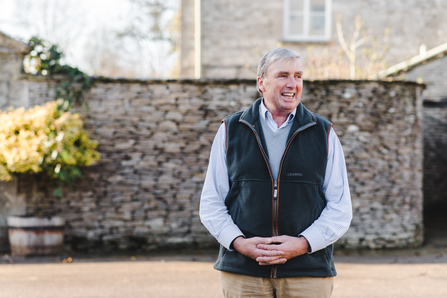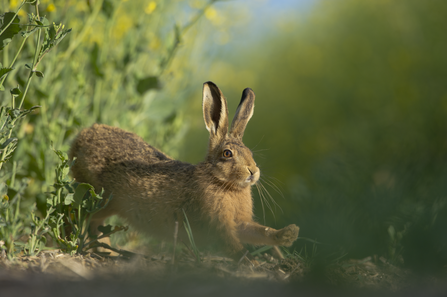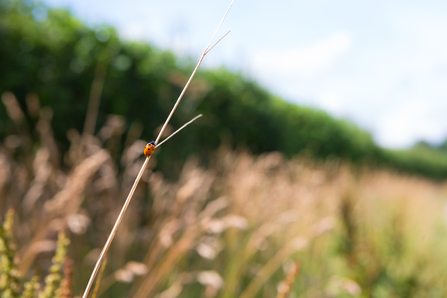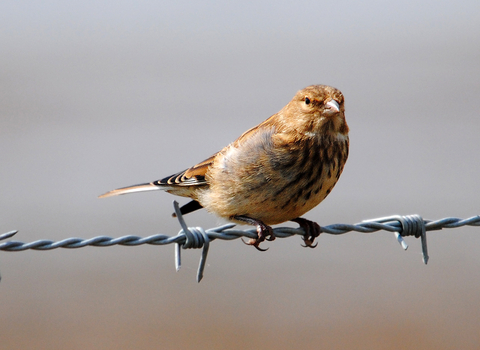A family run business that is entering it's third generation, Oxleaze has rebuilt its connection to nature, is closely involved with government schemes and conservation projects to continually improve biodiversity and soil health.
Discover what benefits Charles has seen since transitioning to organic farming.

Tell us a little about Oxleaze Farm.
Oxleaze is a family run organic farm enterprise on the Oxfordshire border now passing into the third generation as I hand over the day to day running of the farm to my son, Will. We produce dairy and Aberdeen Angus beef, as well as running a Cotswold stone barn wedding venue, self-catered cottages to hire and gardens.
We're excited to share Oxleaze Farm with the next generation, to highlight the positive environmental influences of Organic farming and the lifestyle advantages of home grown, organic and pasture-fed food.
How are the farming practices at Oxleaze Farm different from standard practices?
We have been farming organically since 2004. It is a more challenging way to farm, especially when attempting to establish pollen and nectar and wild bird mixes without being able to use chemicals!
One of the biggest differences in this type of farming is that there’s no need to make everything immaculate and tidy – you can have shaggy edges and things a bit less ordered. For example, we don’t trim the bottom of our south-facing hedges because the partridges feel safer nesting there and there is a ‘McDonald’s’ of insects right on the doorstep for the chicks to feed on.
It’s not until you start to farm this way that you see the difference it can make. You begin to appreciate the joys of what nature can bring: the birds, the butterflies, the crickets jumping round your feet and other things – have they always been there, or do you notice them more because you’re more involved?
Why is making space for supporting wildlife important to you?
Throughout this last couple of years in the pandemic, it has become increasingly apparent that we all need an element of nature in our lives for our sanity. There will be a demand from the urban community to have more nature in their lives and rightly so. As farmers, we can play a part in this.
When it comes to wildlife, there’s always more work to do. I always said that success would be when we could once again see flocks of yellowhammers cartwheeling along the hedges in front of our grandchildren as they ride their ponies around the farm, as I used to in the 50s. So far, we are seeing pairs but not flocks - it’s an encouraging start but we can’t sit back.

Brown hare in oilseed rape field (c) Andrew Parkinson/2020VISION
What are some of the changes to wildlife in and around the farm?
In the last 30 years, the wildlife at the farm has begun to re-emerge and come alive again. The RSPB said we had the highest density of linnets anywhere in England in 2017. Our 35-acre wildflower boundary is teeming with butterflies, we have barn owls, deer and are very lucky in that we have a strong hare population – we can often see groups of six or seven in a field.
If you had any advice for other farmers, what would you suggest?
The whole issue of space, land and access is really challenging. As farmers we need to learn how to approach people walking on footpaths – quite often people are scared of farmers which is a shame: we need to embrace the public, not intimidate them.

Hedgerows (c) Jon Hawkins, Surrey Hills Photography
We hear you’ve had some exciting guests on your wildflower safaris.
Kate Moss was one of the first guests on our wildflower safaris – she was so smitten she’s created her own wildflower meadows! We take people out on an old Massey tractor to our 30-acre wildflower meadows from cowslip time in April to the end of knapweed in September. It looks fantastic. People who have been on our wildflower safaris are often hooked!
Is there anything you’d like to add?
Farming with nature in mind ultimately comes down to patience. For real improvements you do have to be prepared to wait to see the results. There’s a whole depth of nature that has to evolve – you’ve got to get the soil right to get the worms and the insects going before the birds come – it’s the natural cycle of things. Having the Farming and Wildlife Advisory Group (FWAG) and GWT’s knowledge has been a vital sounding board.
Nearing retirement and preparing to hand on the baton to the next generation, we have seen a full circle of agriculture. With bird and butterfly species increasing year on year and an entire underclass of bugs and beetles on the march, we definitely know which kind of stewardship we like the best.

